Once a week, I get to play doctor. Setting aside the endless anki cards and slide decks familiar to all medical students in their preclinical training, I turn instead to my patient interview skills and exam maneuvers as I enter the Kanbar Center. Located on the lower floor of the UCSF campus library behind an unassuming door, the Kanbar Center opens into a large simulation center where we hone our clinical skills with the help of standardized patients. Inside, the quiet, carpet-lined hallways of our library give way to a busy assemblage of medical cabinets, recliners, assorted supplies, and sterile rooms outlined by equipment-adorned walls. This signals our official entry into The Clinic. Against this backdrop, my peers and I don our white coats and adjust our stethoscopes before stepping into the simulation.
Now one year into my medical training, I still experience the foreignness of my costume as I occupy the ethnographic zone of the familiar-strange. With my undergraduate training in anthropology and as an ethnographer of humanitarian and forensic medicine, I am acutely aware of The Clinic (Foucault, 1973) as a social structuring device and attentive to its political power. As my peers and I begin to assimilate into the medical institution, we are learning its language and codes of knowledge, reorganizing ourselves and our reading frames as we acquire the skills to isolate features, organize symptoms, and scan images for anomalies that might reveal the diseases we’re looking for. Yet, as we stumble over our newly acquired illness scripts and overlook key details in patient labs, as we awkwardly place blood pressure cuffs and drum reflex hammers, and as we adjust our eyes to the tiny lens of our otoscopes and ophthalmoscopes, the unease we feel reveals our liminal position as participant-observers where the certainty of our simulation is always under threat.
The Clinic as simulation offers an opportunity to examine processes of assemblage—the configuring of knowledges that presuppose clinical objectivity and the accumulation of props and furnishings necessary for the (re)enactment and (re)location of the medical institution and its logics. While my imposter syndrome has caused some personal anxiety, it has also heightened my awareness of how my body is spatially and temporally located and how I am thrown into relation with the clinical instruments and tools around me. It is a situatedness that answers the call for a politics of disorientation (Ahmed, 2006). For queer phenomenologist Sara Ahmed, objects do not exist in “sensuous certainty” but take on social form through the accumulation of their political milieus and the conditions of their arrival. “An arrival takes time, and the time that it takes shapes ‘what’ it is that arrives. The object could even be described as the transformation of time into form, which itself could be defined as the ‘direction’ of matter” (Ahmed, 2006). If objects surface specific histories through repetition, then the surfaces in closest proximity to us reflect how we are politically and socially oriented to receive them in the present. In the Kanbar Center, the assemblage of medical furnishings, tools, and technologies surface what I know as The Clinic. However, the opacity of my relationship to these objects—granted by my training status and by the construction of this space as simulation—allows for moments of rupture in which to question the certainty of these surfaces.
What follows is an object collection that troubles the arrival of The Clinic by engaging the historic underpinnings, cultural logics, and afterlives of its object parts. I think with the concept of simulation as one that refuses stable orientation as I deconstruct The Clinic, fold back its walls, and examine how each component is socially and politically entangled. Moving beyond the functional utility of clinical objects, I reorient my attention to their social lives and stories in order to unravel the directions of white hegemony which have shaped medicalized subjectivities, categories of citizenship, and diagnostic consequences in contemporary campaigns of exclusion. This is a project that aims to disorient and reorient by destabilizing object surfaces and welcoming alternative paths of arrival.
This is Medicine Disoriented.

Gallery of Disorientations[1]
Scale

Medical scales are common clinical instruments used to measure patient weight. Despite their prevalence in doctors’ offices since the 1870s, weight did not become a part of standard health evaluations until the turn of the twentieth century with the rise of actuarial science and formalization of measures by life insurance companies. At a time where eugenic theory and phrenology were prevalent, quantification of the human body became popular. Life insurance companies were already using height and weight to assess mortality risk, but the standardization of weight tables by George R. Shepherd, medical director at the Connecticut Mutual Life Insurance Company, cemented weight as a proxy for health in the public imagination (Czerniawski, 2006). The representation of weight averages as weight ideals, further formalized by medicine’s widespread adoption of the misleading BMI in standard practice, is central to the modern invention of health and the medicalization of body size.
Speculum
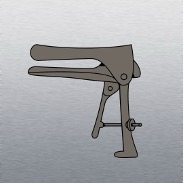 The duckbill speculum is a pronged metal instrument used in pelvic exams to assess the health of the vagina and cervix. Designed by James Marion Sims, the celebrated “father of modern gynecology” and former President of the American Medical Association, this device was created during Sims’s surgical experimentation of vesicovaginal fistula repairs on black slave women. Following the 1808 federal ban on slave import, markets shifted their focus from international to domestic births and the reproductive health of slave women became an economic concern for slaveholders. The speculum was born from tortuous and degrading experiments on black slave women where Sims withheld anesthesia on the premise that black bodies could endure more pain. This concept of the medical superbody (Cooper Owens, 2019) is a legacy that justifies medical testing on black populations and continues to perpetuate racial disparities within maternal mortality and anesthetic delivery.
The duckbill speculum is a pronged metal instrument used in pelvic exams to assess the health of the vagina and cervix. Designed by James Marion Sims, the celebrated “father of modern gynecology” and former President of the American Medical Association, this device was created during Sims’s surgical experimentation of vesicovaginal fistula repairs on black slave women. Following the 1808 federal ban on slave import, markets shifted their focus from international to domestic births and the reproductive health of slave women became an economic concern for slaveholders. The speculum was born from tortuous and degrading experiments on black slave women where Sims withheld anesthesia on the premise that black bodies could endure more pain. This concept of the medical superbody (Cooper Owens, 2019) is a legacy that justifies medical testing on black populations and continues to perpetuate racial disparities within maternal mortality and anesthetic delivery.
Spirometer
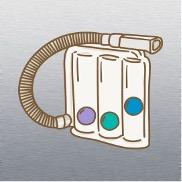 The spirometer is a pulmonary testing device used to measure lung capacity in order to detect changes or pulmonary pathologies. Popularized in England by John Hutchinson in the nineteenth century during the height of urban tuberculosis outbreaks, the device eventually spread to North America where it became part of a racialized science. From its use by slaveholder Samuel Cartwrite to study “deficiencies” in the lung capacity of slaves, to Benjamin Gould’s Civil War era survey of black and white soldiers which reported that blacks had lower lung capacity than whites, to the 1920s eugenic studies that sought to demonstrate innate differences between whites and other races, the spirometer has been used to establish racial inferiority. Today, racial difference is still treated as an ostensible fact without regard to the disproportionate exposures to toxic environments and conditions of poverty that are associated with lower forced vital capacity (Lundy, 2014). The present use of race-adjusted lung-function equations to diagnose disease further implicates access to social resources including medical impairment ratings, occupational eligibility, disease classifications, and disability compensation, with effects diverging according to race (Diao et. al, 2024).
The spirometer is a pulmonary testing device used to measure lung capacity in order to detect changes or pulmonary pathologies. Popularized in England by John Hutchinson in the nineteenth century during the height of urban tuberculosis outbreaks, the device eventually spread to North America where it became part of a racialized science. From its use by slaveholder Samuel Cartwrite to study “deficiencies” in the lung capacity of slaves, to Benjamin Gould’s Civil War era survey of black and white soldiers which reported that blacks had lower lung capacity than whites, to the 1920s eugenic studies that sought to demonstrate innate differences between whites and other races, the spirometer has been used to establish racial inferiority. Today, racial difference is still treated as an ostensible fact without regard to the disproportionate exposures to toxic environments and conditions of poverty that are associated with lower forced vital capacity (Lundy, 2014). The present use of race-adjusted lung-function equations to diagnose disease further implicates access to social resources including medical impairment ratings, occupational eligibility, disease classifications, and disability compensation, with effects diverging according to race (Diao et. al, 2024).
Glove
 Latex medical gloves are personal protective equipment used to shield the hands from harmful chemicals, biohazards, and infection. In Liberia, a country that supplies natural rubber for the manufacturing of latex products around the world, the dire scarcity of latex gloves available to healthcare workers during the 2014 Ebola outbreak shed light on the long histories of colonialism and resource extraction from the Global South (Beisel, 2019) erased by commodity fetichism. The transformation of Liberia into a rubber supplier began in the 1920s as the United States faced threats to its auto industry due to resource restrictions. In response, the American Firestone Tire and Rubber Company established a major rubber plantation in Liberia. While global health projects and UN development agendas aim to repair patchy health infrastructures in the country today, it was also the vision of tropical medicine projects like the 1920s Harvard African Expedition, led by scientists, that helped Firestone build its American empire in Liberia and set in motion movements of latex and global distributions of vulnerability (Mitman and Erickson, 2010).
Latex medical gloves are personal protective equipment used to shield the hands from harmful chemicals, biohazards, and infection. In Liberia, a country that supplies natural rubber for the manufacturing of latex products around the world, the dire scarcity of latex gloves available to healthcare workers during the 2014 Ebola outbreak shed light on the long histories of colonialism and resource extraction from the Global South (Beisel, 2019) erased by commodity fetichism. The transformation of Liberia into a rubber supplier began in the 1920s as the United States faced threats to its auto industry due to resource restrictions. In response, the American Firestone Tire and Rubber Company established a major rubber plantation in Liberia. While global health projects and UN development agendas aim to repair patchy health infrastructures in the country today, it was also the vision of tropical medicine projects like the 1920s Harvard African Expedition, led by scientists, that helped Firestone build its American empire in Liberia and set in motion movements of latex and global distributions of vulnerability (Mitman and Erickson, 2010).
Blood Packet
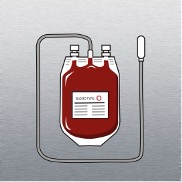 The blood packet is a donated storage of transfusable whole blood or processed components including red blood cells, platelets, plasma, and cryoprecipitated antihemophilic factor, to be used in settings of trauma or blood diseases. As the US continues to experience a shortage of blood bank supply, the FDA announced in 2023 that it would remove the three-month abstinence requirement for men who have sex with men (MSM) and instead implement a screening questionnaire that evaluates HIV risk based on sexual behavior and individualized behaviors that contribute to the spread of blood-borne infections. This comes after a long history of medicalized homophobia dating back to the 1980s HIV/AIDS epidemic, when blood donations by MSM were banned. While HIV testing modalities and understandings of viral transmission have advanced substantially, donation policies have been slower to respond. It was not until 2015 that the lifetime ban for MSM donations was modified to a one-year abstinence requirement, then to three months during the blood shortage following COVID (Perrone, 2023). These changes reflect how medical policies socialize stigma and contribute to lower mental health in LGBTQ+ populations today (Skelly et. al, 2020).
The blood packet is a donated storage of transfusable whole blood or processed components including red blood cells, platelets, plasma, and cryoprecipitated antihemophilic factor, to be used in settings of trauma or blood diseases. As the US continues to experience a shortage of blood bank supply, the FDA announced in 2023 that it would remove the three-month abstinence requirement for men who have sex with men (MSM) and instead implement a screening questionnaire that evaluates HIV risk based on sexual behavior and individualized behaviors that contribute to the spread of blood-borne infections. This comes after a long history of medicalized homophobia dating back to the 1980s HIV/AIDS epidemic, when blood donations by MSM were banned. While HIV testing modalities and understandings of viral transmission have advanced substantially, donation policies have been slower to respond. It was not until 2015 that the lifetime ban for MSM donations was modified to a one-year abstinence requirement, then to three months during the blood shortage following COVID (Perrone, 2023). These changes reflect how medical policies socialize stigma and contribute to lower mental health in LGBTQ+ populations today (Skelly et. al, 2020).
Microscope
 Microscopes are optical instruments used in laboratories to magnify samples ordinarily too small to be seen by the naked eye. In the 1660s, Dutch scientist Antonie van Leeuwenhoek created a high quality hand-ground lens that could magnify animal and plant tissue up to two hundred times. With improvements to image blurring and color separation over time, the technology became central to the rise of laboratory science and cell theory in the 1830s when pathologists like Rudolf Virchow would teach students to “see microscopically” (Science Museum UK, 2019). Under this microscopic view, doctors at Johns Hopkins Hospital harvested and distributed cancerous cell line tissue samples from an African American patient, Henrietta Lacks, without her consent in 1951. The sample, labeled HeLa, demonstrated extraordinary survival capacity and was thus exported to labs across the country. While these cells have advanced scientific understanding of cancer, immunology, and fertility, a microscopic view fails to address the macroscopic frame of racial violence enacted by institutions of medical research and care. Lacks’ granddaughter Jeri Lacks says, “I want scientists to acknowledge that HeLa cells came from an African American woman who was flesh and blood, who had a family and who had a story” (Nature, 2020).
Microscopes are optical instruments used in laboratories to magnify samples ordinarily too small to be seen by the naked eye. In the 1660s, Dutch scientist Antonie van Leeuwenhoek created a high quality hand-ground lens that could magnify animal and plant tissue up to two hundred times. With improvements to image blurring and color separation over time, the technology became central to the rise of laboratory science and cell theory in the 1830s when pathologists like Rudolf Virchow would teach students to “see microscopically” (Science Museum UK, 2019). Under this microscopic view, doctors at Johns Hopkins Hospital harvested and distributed cancerous cell line tissue samples from an African American patient, Henrietta Lacks, without her consent in 1951. The sample, labeled HeLa, demonstrated extraordinary survival capacity and was thus exported to labs across the country. While these cells have advanced scientific understanding of cancer, immunology, and fertility, a microscopic view fails to address the macroscopic frame of racial violence enacted by institutions of medical research and care. Lacks’ granddaughter Jeri Lacks says, “I want scientists to acknowledge that HeLa cells came from an African American woman who was flesh and blood, who had a family and who had a story” (Nature, 2020).
Band-Aid
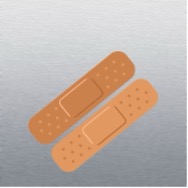 The band-aid is an adhesive bandage composed of a sticky polymer tape and gauze pad for providing temporary coverage to minor wounds. First invented in 1920 by Earle Dickson of the Johnson & Johnson company, the product has become a household name across America. While the company has created new shapes and sizes for the adhesives over the years, the “flesh” colored tape has remained a default for the past one hundred years. Not until the 2020 murders of Aumaud Arbery, Breonna Taylor, and George Floyd, and increased public attention to the Black Lives Matter movement, did Johnson & Johnson respond to calls for racial equity by expanding its range of skin toned tapes. However, white skin continues as the pervasive default in medical design, with markets dominated by white bandages, white prosthetics, whitening devices, and technologies that work only on white skin (Press 2021). In dermatology textbooks sampled in 2022, only 11.5% of images reflected dark skin, Fitzpatrick phototypes IV-VI (Abdulmula, 2022), an educational gap that spills over into poor dermatological outcomes and continued health disparities for patients of color.
The band-aid is an adhesive bandage composed of a sticky polymer tape and gauze pad for providing temporary coverage to minor wounds. First invented in 1920 by Earle Dickson of the Johnson & Johnson company, the product has become a household name across America. While the company has created new shapes and sizes for the adhesives over the years, the “flesh” colored tape has remained a default for the past one hundred years. Not until the 2020 murders of Aumaud Arbery, Breonna Taylor, and George Floyd, and increased public attention to the Black Lives Matter movement, did Johnson & Johnson respond to calls for racial equity by expanding its range of skin toned tapes. However, white skin continues as the pervasive default in medical design, with markets dominated by white bandages, white prosthetics, whitening devices, and technologies that work only on white skin (Press 2021). In dermatology textbooks sampled in 2022, only 11.5% of images reflected dark skin, Fitzpatrick phototypes IV-VI (Abdulmula, 2022), an educational gap that spills over into poor dermatological outcomes and continued health disparities for patients of color.
Red Cross
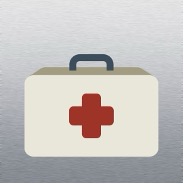 The International Red Cross and Red Crescent movement developed its emblem at the Geneva Conventions of 1949 as a universal signifier of neutrality and impartiality so that healthcare workers could safely offer care to those wounded on the battlefield (American Red Cross, 2020). During times of war, conflict, natural disaster, and emergency, the symbol identifies medical personnel and humanitarian facilities. While the promise of the emblem serves a functional purpose, its presumed neutrality itself is an oriented position directed by a “humanitarian reason” in which the positioning of a unified moral obligation that weighs all life and suffering as equal overlooks the social environments that produce conditions of suffering and violence (Fasin, 2012). The positioning of medicine as a humanitarian project also denies how medicine operates within a complex politics of care in which concern is granted only to bodies that are recognizable as exceptionally ill or suffering (Ticktin, 2012), ignoring how economies of compassion are unequally distributed.
The International Red Cross and Red Crescent movement developed its emblem at the Geneva Conventions of 1949 as a universal signifier of neutrality and impartiality so that healthcare workers could safely offer care to those wounded on the battlefield (American Red Cross, 2020). During times of war, conflict, natural disaster, and emergency, the symbol identifies medical personnel and humanitarian facilities. While the promise of the emblem serves a functional purpose, its presumed neutrality itself is an oriented position directed by a “humanitarian reason” in which the positioning of a unified moral obligation that weighs all life and suffering as equal overlooks the social environments that produce conditions of suffering and violence (Fasin, 2012). The positioning of medicine as a humanitarian project also denies how medicine operates within a complex politics of care in which concern is granted only to bodies that are recognizable as exceptionally ill or suffering (Ticktin, 2012), ignoring how economies of compassion are unequally distributed.
Contagion
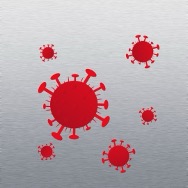 Contagion is the spread of a disease-producing agent through contact. Recent outbreaks include Ebola, HIV, and, of course, COVID-19, each with far-reaching impacts on medical citizenship and the shaping of social stigma, categories of exclusion, and global migration policies. Contagion is not just an epidemiological fact. Rather, the simultaneous rise of globalization and microbial theory in the twentieth century gave rise to the “outbreak narrative,” a dramatization of human contact that shapes group formation and dissolution (Wald, 2008). Bolstered by medical nativism and xenophobia, the outbreak narrative works to transform a contagion from the disease-producing agent to the affected individual or community—reflected, for example, in how COVID-19 was initially called the Wuhan virus. The targeting of immigrants and low-income people as threats to public health dates back to the twentieth century in which the US Public Health Service claimed jurisdiction over immigrant health inspections. Because any diagnosis made by a public health examiner could be grounds for deportation, the fear of contagion bolstered medical authority and shaped concepts of foreignness, giving rise to new categories of medical citizenship.
Contagion is the spread of a disease-producing agent through contact. Recent outbreaks include Ebola, HIV, and, of course, COVID-19, each with far-reaching impacts on medical citizenship and the shaping of social stigma, categories of exclusion, and global migration policies. Contagion is not just an epidemiological fact. Rather, the simultaneous rise of globalization and microbial theory in the twentieth century gave rise to the “outbreak narrative,” a dramatization of human contact that shapes group formation and dissolution (Wald, 2008). Bolstered by medical nativism and xenophobia, the outbreak narrative works to transform a contagion from the disease-producing agent to the affected individual or community—reflected, for example, in how COVID-19 was initially called the Wuhan virus. The targeting of immigrants and low-income people as threats to public health dates back to the twentieth century in which the US Public Health Service claimed jurisdiction over immigrant health inspections. Because any diagnosis made by a public health examiner could be grounds for deportation, the fear of contagion bolstered medical authority and shaped concepts of foreignness, giving rise to new categories of medical citizenship.
Medical Waste
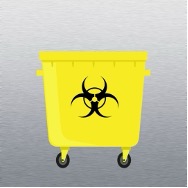 Healthcare waste includes plastics, sharps, chemicals, radioactives, human tissue, and contaminants generated in hospitals and laboratory facilities. In the United States, health care generates an estimated five to six millions of tons of waste each year with 75-90% being nonhazardous and 10-25% being regulated medical waste (RMW) requiring processing and incineration due to the potential for infection (APHA 2023). Despite environmental justice research citing the downstream impacts of carbon emissions and waste exportation to low-income neighborhoods in the United States and abroad, and coalitions pushing back against the siting of dumps and incineration facilities in communities of color, there is still no federal regulation for tracking medical waste or its downstream impacts. The anthropology of waste and discard studies provides a framework to imagine waste as a transformation of materials, knowledges, and institutional and commercial networks in which the concealment of waste and the “model of invisibility” is constitutive to industrial capitalism (Lima, 2023). Environmental racism results from the exportation of toxic byproducts and risks to the periphery, accompanied by the “(un)knowing” of its consequences (Alexander and O’Hare, 2020).
Healthcare waste includes plastics, sharps, chemicals, radioactives, human tissue, and contaminants generated in hospitals and laboratory facilities. In the United States, health care generates an estimated five to six millions of tons of waste each year with 75-90% being nonhazardous and 10-25% being regulated medical waste (RMW) requiring processing and incineration due to the potential for infection (APHA 2023). Despite environmental justice research citing the downstream impacts of carbon emissions and waste exportation to low-income neighborhoods in the United States and abroad, and coalitions pushing back against the siting of dumps and incineration facilities in communities of color, there is still no federal regulation for tracking medical waste or its downstream impacts. The anthropology of waste and discard studies provides a framework to imagine waste as a transformation of materials, knowledges, and institutional and commercial networks in which the concealment of waste and the “model of invisibility” is constitutive to industrial capitalism (Lima, 2023). Environmental racism results from the exportation of toxic byproducts and risks to the periphery, accompanied by the “(un)knowing” of its consequences (Alexander and O’Hare, 2020).
Note
[1] All images in this post were created by the author using Canva.
This post was curated by Contributing Editor Amy Kuritzky.
References
Abduelmula, Abrahim, Edgar Akuffo-Addo, and Marissa Joseph. “The Progression of Skin Color Diversity and Representation in Dermatology Textbooks.” Journal of Cutaneous Medicine and Surgery 26, no. 5 (May 11, 2022): 523–25. https://doi.org/10.1177/12034754221099668.
Ahmed, Sara. Queer Phenomenology: Orientations, Objects, Others. Durham, NC: Duke University Press, 2006.
Alexander, Catherine, and Patrick O’Hare. “Waste and Its Disguises: Technologies of (Un)Knowing.” Ethnos 88, no. 3 (July 30, 2020): 419–43. https://doi.org/10.1080/00141844.2020.1796734.
American Public Health Association. “Advancing Environmental Health and Justice: A Call for Assessment and Oversight of Health Care Waste. (APHA Policy Statement Number 20224, Adopted November 2022).” NEW SOLUTIONS: A Journal of Environmental and Occupational Health Policy 33, no. 1 (April 6, 2023): 51–59. https://doi.org/10.1177/10482911231167166.
Beisel, Uli. “On Gloves, Rubber and the Spatio-Temporal Logics of Global Health.” Somatosphere, June 27, 2019. http://somatosphere.net/2014/rubber-gloves-global-health.html/.
Braun, Lundy. Breathing race into the machine the surprising career of the spirometer from plantation to Genetics. Minneapolis, MN: University of Minnesota Press, 2014.
Cooper Owens, Deirdre Benia, and Allyson Johnson. Medical bondage: Race, gender, and the origins of American gynecology. Old Saybrook (Conn.): Tantor Audio, 2019.
Czerniawski, A. M. “From Average to Ideal: The Evolution of the Height and Weight Table in the United States, 1836-1943.” Social Science History 31, no. 2 (June 1, 2007): 273–96. https://doi.org/10.1215/01455532-2006-023.
Diao, James A., Yixuan He, Rohan Khazanchi, Max Jordan Nguemeni Tiako, Jonathan I. Witonsky, Emma Pierson, Pranav Rajpurkar, et al. “Implications of Race Adjustment in Lung-Function Equations.” New England Journal of Medicine 390, no. 22 (June 13, 2024): 2083–97. https://doi.org/10.1056/nejmsa2311809.
Fassin, Didier. Humanitarian reason: A moral history of the present. Berkeley: University of California Press, 2012.
Foucault, Michel. The Birth of the Clinic: An Archaeology of Medical Perception. New York, NY: Pantheon, 1973.
“Henrietta Lacks: Science Must Right a Historical Wrong.” Nature 585, no. 7823 (September 1, 2020): 7–7. https://doi.org/10.1038/d41586-020-02494-z.
Lima, Maria Raquel. “Anthropology of Waste: A Research Agenda for the Study of Cities in the Era of Climate Change.” Vibrant: Virtual Brazilian Anthropology 20 (2023). https://doi.org/10.1590/1809-43412023v20d912.
Markel, Howard, and Alexandra Minna Stern. “The Foreignness of Germs: The Persistent Association of Immigrants and Disease in American Society.” The Milbank Quarterly 80, no. 4 (December 2002): 757–88. https://doi.org/10.1111/1468-0009.00030.
“The Microscope.” Science and Technology in Medicine, August 19, 2019. https://www.sciencemuseum.org.uk/objects-and-stories/medicine/microscope.
Mitman, Gregg, and Paul Erickson. “Latex and Blood.” Radical History Review 2010, no. 107 (May 1, 2010): 45–73. https://doi.org/10.1215/01636545-2009-034.
Perrone, Matthew. “After Years of Protests, FDA Makes Blood Donations Easier for Men Who Have Sex with Men.” PBS News, January 27, 2023. https://www.pbs.org/newshour/health/after-years-of-protests-fda-makes-it-easier-for-gay-and-bisexual-men-to-donate-blood.
Press, Sara. “A Band-Aid on Systemic Racism.” Synapsis, December 9, 2021. https://medicalhealthhumanities.com/2021/12/09/a-band-aid-on-systemic-racism/.
“Red Cross Emblem Symbolizes Neutrality, Impartiality.” American Red Cross. Accessed August 7, 2024. https://www.redcross.org/about-us/news-and-events/news/2020/red-cross-emblem-symbolizes-neutrality-impartiality.html.
Skelly, Ashwin N, Likhitha Kolla, Margaret K Tamburro, and Katharine J Bar. “Science over Stigma: The Need for Evidence-Based Blood Donation Policies for Men Who Have Sex with Men in the USA.” The Lancet Haematology 7, no. 11 (November 2020). https://doi.org/10.1016/s2352-3026(20)30326-4.
Ticktin, Miriam Iris. Casualties of care immigration and the politics of humanitarianism in France. Berkeley: Univ. of California Press, 2012.
Wald, Priscilla. Contagious: Cultures, carriers, and the outbreak narrative. Durham, NC: Duke University Press, 2008.
